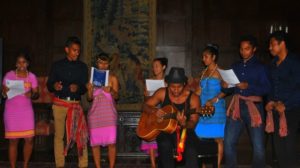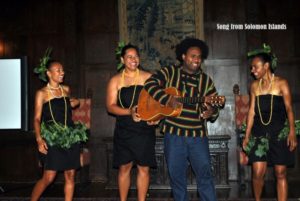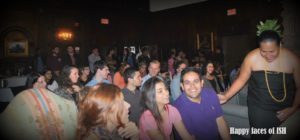The ISH garden looks best in the summertime. This has been my last summer here at International Student House. After my stay for more than two years, the day has come to say goodbye to this beautiful place. I have thought about it many times and I wondered what made ISH such a happy place? What aspects of ISH can I take with me to recreate the same happiness?
I decided to interview fellow residents (mostly long timers) to find out what made ISH so special for them.
Here are some of my favorites:
“ISH gives you the option to stay alone if you chose to and slide into any group whenever you want to. This fluidity clearly is unique, because the outside world is either solitary or communal.”
“There is a greater level of tolerance within the ISH community. Due to the model of prolonged stay (at least a month), we tend to forgive and forget quickly.”
“A legacy of kindness exists. When you come here new, someone more experienced would assist you. Then you are reminded of the same thing when someone new arrives and[you] help out the new resident. This becomes a chain of kindness passed over from semester to semester.”
I also feel a very important aspect of ISH living is to focus more on our similarities than our differences. After several discussions, it became clear that even among different opinions, the core beliefs of community, love and family stay the same.
In a hugely diverse community like ISH, the topic of race comes up occasionally. I remember this conversation about racism once. We unanimously agreed that anytime anyone assumes supremacy based on something that the person was born with (color, financial status, parental status, etc.) it falls close to the category of racism. I find that in ISH, over a period of time, we are taught to overlook these differences and begin to connect to the human identity.
Usually, over the stay, your original identity of nationality soon becomes something cool you are known for. For example, if someone was ‘Fernando from Ecuador’ at the beginning of the stay, towards the end, he would be ‘Fernando who loves ketchup’, or Chris becomes ‘Chris who has a particular affection for minions’. You become known as ‘Jakub the amazing violinist’, or an articulate writer, an intriguing storyteller, the resident mother, the improvisational comedian or a scientist. You will be known for what you are instead of where you are from or what you do. Isn’t it a Utopian concept for a perfect world; where your color or nationality or your gender is not your first point of identification? This is what ISH teaches you, apart from the many other lessons you receive. To see another person for what he/she is.
As one of my favorite fellow residents, (who is an idealist like many of us here) mentioned a few days ago, “After staying in ISH for such a long time, it feels like we have graduated from a very prestigious university and now it is our responsibility to take what we have learned here and use it for the betterment of the outside world.”
Of the millions of students around the world, I was one among the many to experience this privilege. I am very thankful to ISH which also encompasses our ever enthusiastic Board Members, Executive Director Tom O Coin, our Resident Managers Bob and Jen; Jill, David, Katie and all other equally important staff members who work together to ensure that the brand of ISH stays.
Goodbye ISH and good luck to all the current and future residents. ISH will change your life, if you let it.














